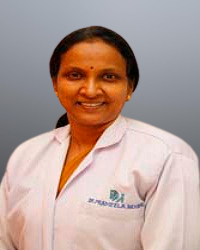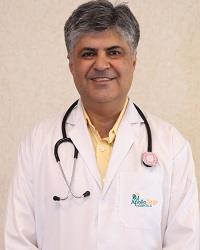Search Result: 9

Dr Jasmin Rath
MBBS; MD (Obstetrics & Gynecology) Specialist in High Risk Pregnancy and Laproscopy,Trained in Laproscopy,Infertility & USG WHI intiative Laproscopy Training
Registration No
524868
Language
English, हिंदी, ଓଡ଼ିଆ, తెలుగు

10 years experience overall

Jubileehills & kondapur , Hyderabad
MON- SAT, MON- SAT(12:15 PM-03:45 PM)

Dr Prameela Sekhar
MBBS,DGO,DNB
Registration No
45063
Language
English, हिंदी, తెలుగు

28 years experience overall

Jubileehills & Jubileehills & kondapur , Hyderabad
MON- SAT, MON- SAT(01:30 PM-02:30 PM)

Dr Sudha Madhuri
MBBS,DGO,MRCOG
Registration No
765400
Language
English, हिंदी, తెలుగు

15 years experience overall

kondapur , Hyderabad
MON- WED, FRI, SAT(10:30 AM-01:30 PM)

Dr Suneetha Gudipati
MBBS, MD, OBG, OSM, MRCOG (UK)
Registration No
81172
Language
English, हिंदी, తెలుగు

15 years experience overall

kondapur , Hyderabad
TUE(01:30 PM-03:00 PM)

Dr Vimee Bindra Basu
MBBS, MS(Obs& Gynecology), MHA, FICOG
Registration No
505892
Language
English, বাংলা, हिंदी, ਪੰਜਾਬੀ, తెలుగు

11 years experience overall

Jubileehills , Hyderabad
MON- SAT, MON- SAT(10:00 AM-02:00 PM)

Dr Madhavi Latha Munagapathy
MBBS, DGO, DNB
Registration No
594180
Language
English, हिंदी, తెలుగు

11 years experience overall

Madeenaguda , Hyderabad
MON- SAT(10:30 AM-12:00 PM)

Dr Neeraja Valli
MS OBG
Registration No
2915506
Language
English, हिंदी, తెలుగు

11 years experience overall

Jubilee Hills , Hyderabad
MON- SAT(11:00 AM-02:00 PM)

Dr Pavan Kumar
DNB ( Obstetrics and Gynaecology )
Registration No
2915492
Language
English, हिंदी, తెలుగు

7 years experience overall

Jubilee Hills , Hyderabad
MON- SAT(09:00 AM-10:00 AM, 02:00 PM-03:00 PM)

Dr Tayi Yamuna
MBBS, MD, D.G.O (Obstetrics & Gynaecology)
Registration No
539359
Language
English, हिंदी, తెలుగు

39 years experience overall

A S Rao Nagar , Hyderabad
MON, TUE | WED | THU- SAT(11:30 AM-11:40 AM, 11:45 AM-01:00 PM | 11:30 AM-11:50 AM, 12:00 PM-01:00 PM | 11:30 AM-11:40 AM, 11:45 AM-01:00 PM)
Frequently Asked Questions for Myomectomy in Hyderabad
The benefits of a myomectomy include relief from symptoms such as heavy menstrual bleeding, pelvic pain, and pressure. It also preserves fertility for women who wish to have children in the future and improves the quality of life by elevating pain and complications caused by fibroids.
Yes, a myomectomy has shown to improve fertility by removing fibroids that were causing infertility issues. However, the chances of conception and improved fertility depend on various factors, including the size and location of fibroids, age, and other underlying fertility factors.
The ideal time to conceive after a myomectomy is after six months, allowing the uterus to properly heal before attempting pregnancy. Under special conditions where the surgery was complicated, a one year wait before conceiving is recommended. Your doctor will guide you through this based on your situation.
Yes, it is possible to have a baby after a myomectomy. Myomectomy aims to preserve fertility by removing fibroids while keeping the uterus intact. However, the success of conceiving and carrying the pregnancy to term may depend on other factors, such as your age, overall health, or having other fertility issues.
While both a myomectomy and C-section involve making an incision in the abdomen, their purposes and procedures are different. Myomectomy is performed to remove fibroids from the uterus, while a C-section is a surgical procedure to deliver a baby when a vaginal delivery is not possible or safe.
Yes, a myomectomy is a major surgery. It involves making an incision in the abdomen or using minimally invasive techniques to remove fibroids from the uterus.
Eligibility for a myomectomy depends on factors such as size, number, and location of fibroids, overall health, and desire for future fertility. It is one of the few treatments to cure heavy bleeding, pelvic pain, uterine fibroids while keeping your uterus intact. Your doctor will assess your case to determine if a myomectomy is right option for you.
There are many hospitals that specialise in gynecologic surgeries, including a myomectomy. It is best to choose a hospital that has experienced gynaecologists specialising in women’s health, advanced surgical equipment, and a good track record in performing successful myomectomies.
The duration of a myomectomy procedure can take 1 to 3 hours, depending on factors such as the size, number, and location of the fibroids.
Post-procedure care for a myomectomy involves taking pain medication and antibiotics for pain and prevention of infection, proper resting, and avoiding heavy lifting or strenuous activities. Your doctor will provide specific instructions on wound care and follow-up appointments.
Preparation for a myomectomy may involve blood work, urine tests, imaging tests (ultrasound or MRI), an ECG, and a thorough evaluation of your overall health. Your doctor may also advise you to stop certain medications and avoid eating, drinking, and other preparations before the surgery.
The recovery time from a myomectomy differs based on the type of procedure performed (open surgery, laparoscopic, or robotic). Generally, it takes about 3-6 weeks to recover fully. However, some women may need more time to recover based on their individual circumstances.
Myomectomy has a high success rate in relieving symptoms, preserving fertility, and improving the quality of life for women with fibroids. However, it depends on factors such as the size and location of the fibroids.
To find the best doctors for a myomectomy, you can ask for suggestions from your primary care physician or friends and family. You can also research online and look for experienced gynecologic surgeons specialising in a myomectomy.
A gynaecologist or a gynaecologic surgeon performs the myomectomy procedure. They specialise in women’s reproductive health and have the necessary skills to conduct surgeries.
A doctor who performs a myomectomy should be a qualified gynaecologist or a gynaecologic surgeon with specialised training in minimally invasive or robotic surgery techniques.
Myomectomy is a surgical procedure to remove fibroids (leiomyomas), which are non-cancerous growths in the uterus. This procedure preserves the uterus and is recommended for women who want to have children in the future.
Related Procedures in Hyderabad
- Doctors for Hysterectomy in Hyderabad
- Doctors for Mastectomy in Hyderabad
- Doctors for C-section in Hyderabad
- Doctors for Medical abortion in Hyderabad
- Doctors for Myomectomy in Hyderabad
- Doctors for Adhesiolysis in Hyderabad
- Doctors for Hysteroscopic Polypectomy in Hyderabad
- Doctors for Diagnostic Laproscopy in Hyderabad
- Doctors for Fibroid Removal in Hyderabad
- Doctors for Laparoscopic Assisted Vaginal Hysterectomy in Hyderabad
- Doctors for Removing Uterine Polyps in Hyderabad
- Doctors for Total Laparoscopic Hysterectomy in Hyderabad
- Doctors for Diagnostic Hysteroscopy in Hyderabad
- Doctors for Ovarian Cyst Removal in Hyderabad
- Doctors for Hysteroscopic Myomectomy in Hyderabad
- Doctors for Tubal Ligation in Hyderabad
- Doctors for Breast Surgery in Hyderabad
Related Treatments in Hyderabad
- Doctors for Ectopic Pregnancy Treatment in Hyderabad
- Doctors for Endometriosis Treatment in Hyderabad
- Doctors for Hirsutism Treatment in Hyderabad
- Doctors for Lichen Planus Treatment in Hyderabad
- Doctors for Menopause Treatment in Hyderabad
- Doctors for Polycystic Ovary Syndrome Treatment in Hyderabad
- Doctors for Sexually Transmitted Diseases Treatment in Hyderabad
- Doctors for Urinary Incontinence Treatment in Hyderabad
- Doctors for Uterine Fibroids Treatment in Hyderabad
- Doctors for Uterine Prolapse Treatment in Hyderabad
- Doctors for Vaginitis Treatment in Hyderabad
Other Specialities in Hyderabad
- Best Urologist in Hyderabad
- Best Pulmonologist in Hyderabad
- Best General Physician in Hyderabad
- Best Endocrinologist in Hyderabad
- Best Cardiologist in Hyderabad
- Best Oncologist in Hyderabad
- Best Radiologist in Hyderabad
- Best Orthopedics in Hyderabad
- Best Hepatologist in Hyderabad
- Best Gynecologist in Hyderabad
- Best Dermatologist in Hyderabad
- Best Gastroenterologist in Hyderabad
- Best Psychologist in Hyderabad
- Best Ent Specialist in Hyderabad
- Best Nephrologist in Hyderabad
- Best Rheumatologist in Hyderabad
- Best Diabetologist in Hyderabad
- Best Psychiatrist in Hyderabad
- Best Neonatologist in Hyderabad
- Best Dentist in Hyderabad
- Best Dietitian in Hyderabad
- Best Haematologist in Hyderabad
- Best Pediatrics in Hyderabad
- Best General Surgeon in Hyderabad
Top Hospitals in India
- Hospitals in Ahmedabad
- Hospitals in Bangalore
- Hospitals in Bhubaneswar
- Hospitals in Bilaspur
- Hospitals in Chennai
- Hospitals in Delhi
- Hospitals in Guwahati
- Hospitals in Hyderabad
- Hospitals in Indore
- Hospitals in Kolkata
- Hospitals in Madurai
- Hospitals in Mumbai
- Hospitals in Mysore
- Hospitals in Nashik
- Hospitals in Noida
- Hospitals in Visakhapatnam
- Hospitals in Lucknow
- Hospitals in Bhopal
- Hospitals in Karur
- Hospitals in Kochi
- Hospitals in Nellore
- Hospitals in Trichy
- Hospitals in Kakinada
© Copyright 2024. Apollo Hospitals Group. All Rights Reserved.
 +91 8069991061
Book Appointment
+91 8069991061
Book Appointment






 Call Now
Call Now









